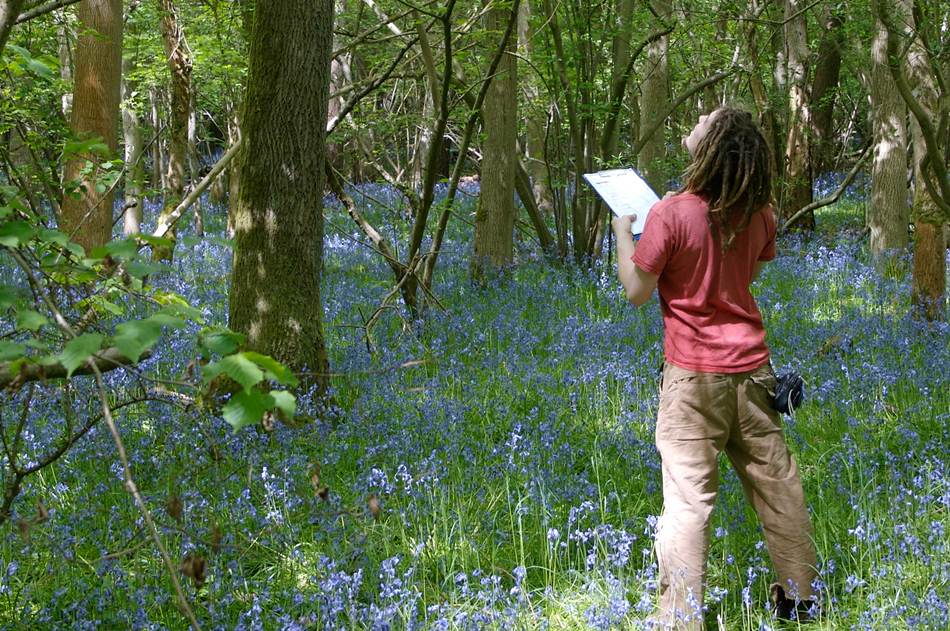Trees have existed on earth for many millions of years, long before man appeared on the scene and will doubtless still be around long after mankind has disappeared so any suggestion that woodlands can somehow be managed seems at first sight to be a rather arrogant view of man’s self-importance. But, throughout human history, mankind has regarded trees as being a valuable resource often leading to the mass destruction of forests along with the complex eco-systems supported by them. Today’s guardians of our woodlands take a much more balanced view and it is now widely accepted that effective woodland management techniques can be of benefit not only to man but also to wildlife and the trees themselves.
Woodland Management Objectives
Following on from the disastrous overexploitation of forests in the past, one of today’s main priorities is the principle of sustainability which, in its most simple context, means that the negative impacts of tree felling are countered by a programme of replanting meaning there is no reduction in the amount of forestation. In practice things are slightly more complicated and the amount of sustainable timber removal is usually linked to the annual increase in the amount of standing timber in the forest. As an example, if the annual increase in timber mass was 10% then felling of 5% of the trees would still result in a 5% overall increase in timber as an asset.
Woodlands are of course much more than simply a commercial enterprise. They are magical places which are the homes of many different species and are great places for leisure and recreational activities. Conserving and encouraging biodiversity is always a high priority and some thought also needs to be given to the logistical practicalities of harvesting. Woodlands are currently facing many challenges from the dangers of pests and diseases with many native species under threat including Elm, Ash, Oak and Horse Chestnut and positive intervention may be necessary to control these threats. Another important consideration is climate change which could potentially dictate which species survive. It may even be necessary to consider planting different species more suited to the changing climatic conditions.
Methods of Woodland Management
Some people believe that woodlands should be completely left to their own devices whilst others consider that forests should resemble well-tended gardens. In truth the ideal situation lies some way between these two extremes. Fallen or standing trees left to rot and decay become a haven for wildlife and, contrary to popular belief do not pose any disease threats to living trees but some invasive plants can cause serious problems to the local ecology. Plants such as Rhododendron or Laurel can effectively wipe out all other competing plants along with much of the associated wildlife. Periwinkle and Japanese Knotweed are similarly invasive.
Planting techniques vary and many of our softwood forests were simply planted to provide a future crop of timber with harvesting resulting in the clearing of large swathes of land. Some plantations however have been planted with sustainability in mind containing trees of mixed ages so providing an everlasting forest. The choice of species for planting requires careful consideration as these trees will reach maturity many years in the future so these trees are our legacy for future generations. Traditionally softwoods have been planted for economic timber production with broadleaved native species considered to provide a more diverse natural habitat. Although many conifers will grow in parts of the UK it should always be remembered that the Scots Pine is our only truly native species and that increasingly warm winters may affect the suitability of some sites for some species.
Alternative techniques for timber production have been employed for hundreds of years including the practice of coppicing of species such as Hazel and Willow to produce poles. Wood of this type was used extensively in early building techniques but its uses are now rather limited other than for rural crafts such as the production of woven garden hurdles. Coppicing can still be practised but great care needs to be taken to protect the new shoots from hungry rabbits and deer. Pollarding is a similar technique in which the new growth stems from a taller stump meaning that it should be safe from grazing animals assuming that the woodland in question is not inhabited by herds of marauding Giraffes! Fast growing softwoods can be planted and harvested for purposes of construction, through an acetylation process a softwood can be transformed into durablesustainable building materials.
Other practical considerations include the provision of some cleared areas within the woodland not only to encourage the forest edge species but also to allow for harvesting operations and log stacking.
So a well-managed woodland site benefits the local wildlife, is a sound economic business opportunity and even helps to battle the threat of global warming by carbon removal which seems to make it a Win, Win, Win situation.

Comments
One response to “Woodland Management Techniques”
I am thinking of investing in woodland. My primary goal is to protect the land from development but I would like to be able to generate a small income from it if I am able to use some sustainable forestry practices. Can anyone suggest some good places to start my research into small scale forestry?